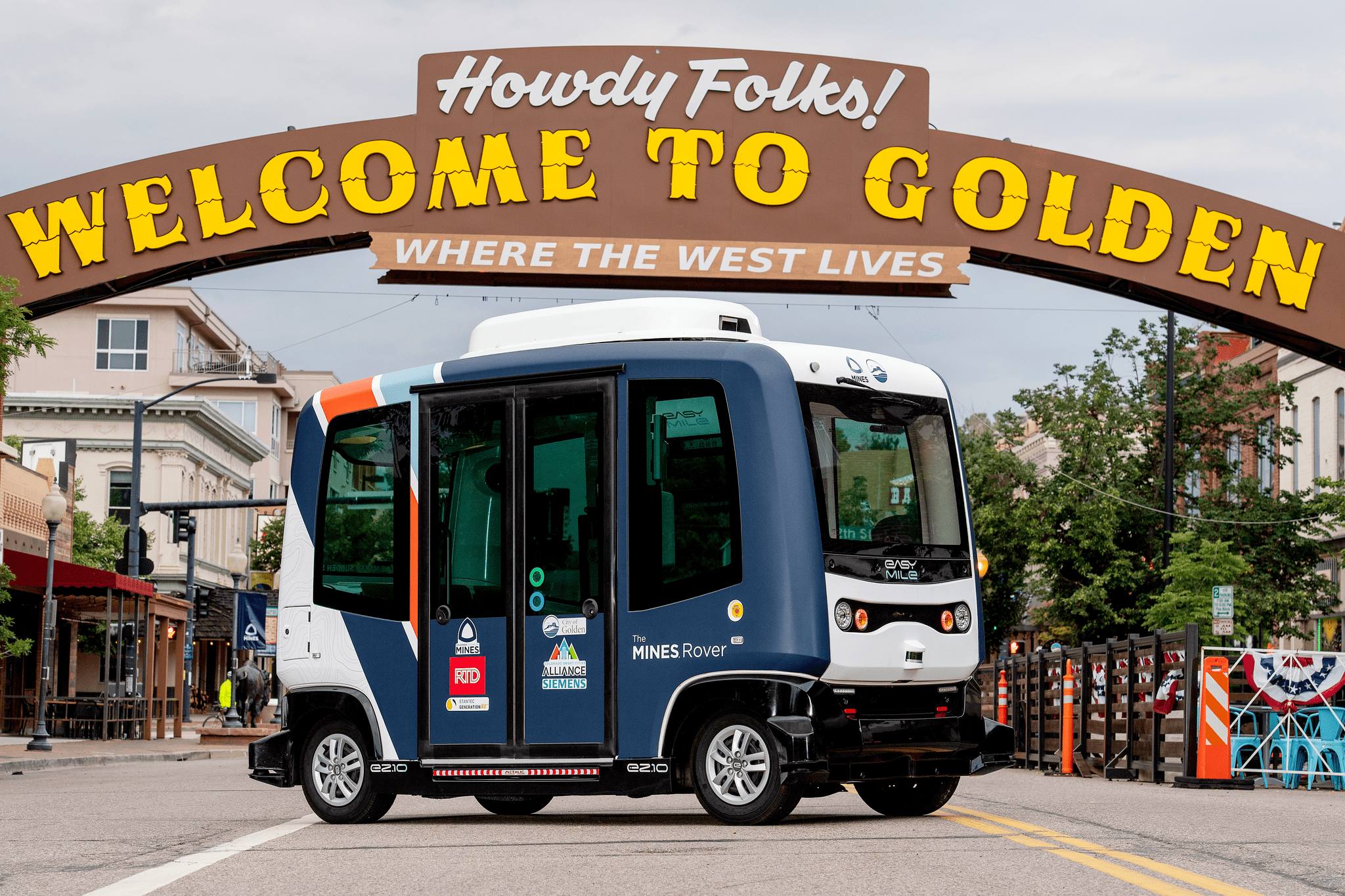For the average college student, getting around campus is dependent on walking, biking, or taking the bus. Yet, the Colorado School of Mines in Golden, Colorado, introduced a new and sustainable form of microtransit for getting around campus. It’s an all-electric shuttle designed to cut 90% of the normal emissions from gas-powered mass-transit vehicles. The twist – it’s completely autonomous.
This autonomous shuttle initiative was a project two years in the making with cooperation from Colorado-based companies, scientists, and the school itself, all involved with its development.
Gary Bowersock, associate vice president of infrastructure at the School of Mines, describes this innovative transportation method as a critical “last-mile service” that helps students make the distance between larger mass transit stops and their classrooms. Half of the project’s operations during the first year will be funded through a student-approved budget, with many students doing thesis projects around various elements of the shuttles as well.
The shuttles themselves, fittingly called the Mines Rovers, seat six people and travel all around the School of Mines campus, providing free access for students, staff, and the general public. Each rover will travel at a safe 12 miles per hour around one of three pre-routed courses. A series of lasers and sensors will guide the way and respond to any obstacles in its path. However, in order to ensure the complete safety of its passengers, there will be a trained Mines student who will both engage with the riders and assume control of the shuttle if necessary. In addition, the Mines Rovers are equipped with seatbelts and meet the American Disabilities Act’s standards for accessibility.
The nine shuttles were delivered in early August of 2021 to the first of three locations at the School of Mines as part of the Autonomous Vehicles Colorado (AvCo) program. The other autonomous shuttles will be set for Greenwood Village and Colorado Springs and are projected to be released within the next year. When all the shuttles are delivered, it will be the largest fleet of low-speed autonomous electric transit vehicles in the United States.
The introduction of these autonomous vehicles was realized in cooperation with the Colorado Smart Cities Alliance, which works to introduce smart and sustainable technology to cities all over Colorado.
“When people think of autonomous vehicles today, they see themselves riding alone – separated from other people and the overall transportation system,” said Tyler Svitak, executive director of the Colorado Smart Cities Alliance. “We want AvCo to change that perception by allowing people to experience how these technologies can maximize individual and societal benefits through integration with a shared public transit system.”
In addition to helping further the cause of the Colorado Smart Cities Alliance, the AvCo project also helps further the goals of the community. “The City of Golden is thrilled to be the first city in Colorado to offer zero-emission, autonomous microtransit,” said Golden’s Mayor Laura Weinberg. “We thank our partners on this collaboration and the opportunity to advance our transportation sector community goals of 20% fossil fuel-free by 2030 and 100% fossil fuel-free by 2050.”The Mines Rover project is a cool first step that will surely inspire other sustainable transportation projects in the future. However, the president of the School of Mines, Paul Johnson, says that’s not the reason for its development. “The reason we’re doing this is because it’s cool, and it’s the future.”





